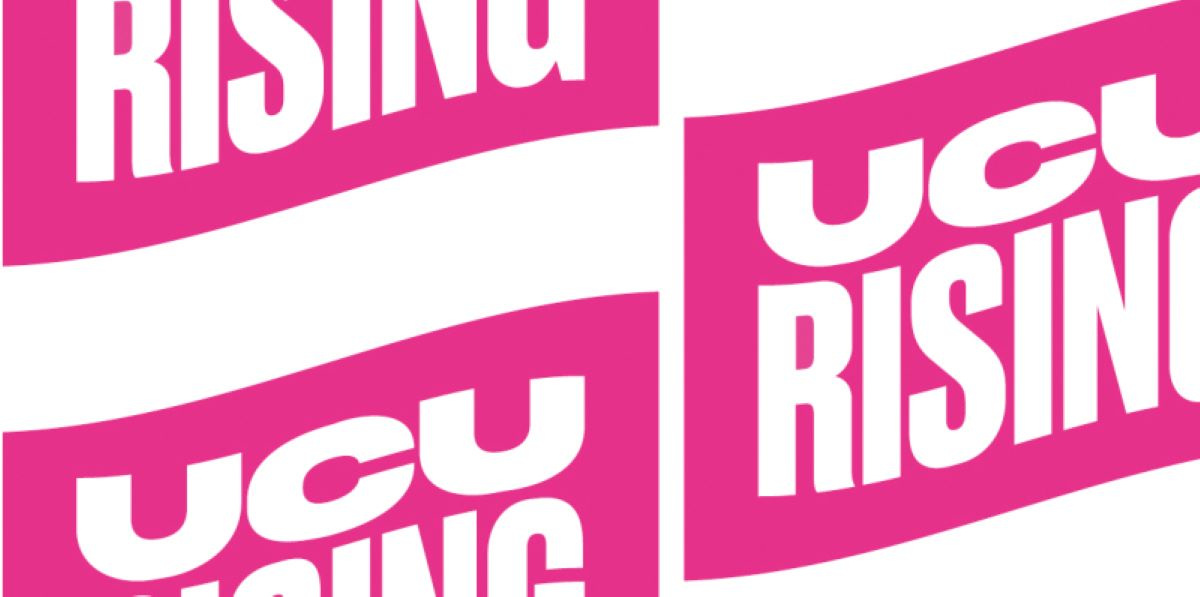The University and Colleges Union (UCU) has just achieved the first national mandate for an education union since the Trade Union Act 2016. In aggregated ballots on pay and conditions and separately on pensions, ‘yes’ votes topped over 80 per cent on turnouts of 57.8 per cent and 60.2 per cent respectively. There will now be national industrial action affecting every university campus across the UK and Northern Ireland. Alongside this UCU members in further education colleges and the prison sector both have live mandates as do some UNISON branches in higher education (HE). The NEU, the NASUWT and even the NAHT (the headteachers’ union) will also be balloting members.
This is a historic moment for the education sector as a whole. In January for the first time all of these unions will likely have live mandates for action simultaneously. There is a chance here not only for specific industrial action around pay but for coordinated action that brings education workers together across schools, colleges, universities and prison education. Coordinated strike action could bring together education workers and really all workers, creating the possibility of mass local strike rallies.
A strike is or should be an educational space. This is true for every picket line. Last March at Durham our pickets coincided with open days. Students had organised to protest the way that Rod Liddle’s unannounced speech to students at a Christmas dinner had been dealt with by management. We heard moving speeches from trans staff and from students protesting against the way the incident was handled. This was a chance for powerful solidarity to be built between students and staff and to connect our struggles.
Coordinated strike dates between education workers and all workers could create opportunities for these discussions on a massive scale. Imagine a strike rally where workers didn’t just listen to speeches but instead had to find a worker from a different sector and ask why they were out on strike? What are the common problems that education workers and our students face? How are they connected?
Marketisation and inequality
The education system has been riven by decades of marketisation and more recently ten years of stagnant funding. Whether it’s tuition fees, rankings and league tables, private finance initiatives, bloated over–paid senior leadership teams, academisation, incorporation – the market has been forced on us and we have all suffered as a consequence. Staff and students have experienced not only a downgrading of their working and learning conditions but the deliberate, ideological imposition of ways of learning that are competitive, divisive and unequal.
Whether it is the rescaling of GCSE grades, guidance over suppressing anti-racist, anti-capitalist ideas, seeking to undermine decolonial protest, disingenuous ‘free speech’ controversies that often hide a desire for freedom from criticism on issues of equality – the education system has been re-organised in ways that exacerbate inequality and seek to suppress and repress critical educators. The governance structures imposed through academisation, college incorporation and mergers or the concentration of power and wealth in universities all ultimately act to weaken democracy.
These changes began under Thatcher, continued under New Labour and accelerated after 2010. But this was built on an education system that was already deeply unequal. Education is designed to create and reproduce hierarchy and to exclude. This means the reproduction of class inequality, the exclusion of disabled students and staff, continued racism in classrooms and across educational processes from exclusions to assessment, historic gender inequalities and new forms of exclusion in the treatment of LGBT+ students and education workers.
To build an education system that works, for the first time, in favour of the multi-racial working class and marginalised or minoritized communities, we have to understand the changes that have been imposed on us. We also need to understand the levers that exist for workers and students to take control of their working and learning spaces.
Building solidarity from the bottom up
Well-organised, democratic, bottom-up union structures are central to this. UCU’s success in a national aggregated ballot has come from an organised and engaging national and local campaign. It involved local and national data collection – checking off every time a member records that they have voted and becoming persistent in asking members to vote. Engaging social media campaigns from national also played an important role.
But the backbone of UCU’s success is organised, engaged and participatory local branch structures. These have been built up in many branches since the wave of strikes in 2018 that saw the union defeat an attempt to end defined benefit pensions completely. Throughout our local ‘Get The Vote Out’ campaign at Durham, our local data was ahead of national data management. Our local data management system allows us to quickly target our efforts on particular sections of the university. We have built up a network of activists and a strong departmental rep structure with regular general meetings to debate and decide strategy. Outside of national disputes this is essential for protecting and improving conditions for workers at a local level.
Staff and student solidarity has to be tangible, real and frequent
Students too need to be engaged in thinking through what organisational structures, modes of democratic participation and tactics will work. The ‘cost of living crisis’ that is driving the current wave of industrial action is also affecting students. In HE this means pressures on student budgets, housing crises which are exacerbated by university management greed and an utterly unsustainable and unjustifiable funding model based on indebting younger generations.
Staff and student solidarity has to be tangible, real and frequent. At Durham we have regular meetings with students’ union sabbatical officers. As well as current issues, we also discuss other more imaginative, long-term ideas – could we develop student housing co-ops with support from the local UCU branch? What about mutual aid groups to support students and staff in hardship?
The long haul
The structural nature of all our problems means that we have to be in for the long haul. It took decades to build the rotten system that we have, we will not build the emancipatory, equal, publicly-funded education system that we need overnight. Nor can we trust any future Labour government led by managerial centrists to create the changes we want and need. Pressure from below is essential. That means building local union structures that are sustainable and have deep roots. It means national structures that are democratic, participatory and driven by membership from the bottom up. It means engaging with students to create long-lasting relationships for solidarity and resistance.
Coordinated strike dates could accelerate many of these processes. Each moment matters. And right now, we must put pressure on union leaderships to coordinate and plan for sustained action that will likely last for the entire educational year. Hitting the education system where it hurts most – the exam terms, will almost certainly be necessary. This means beginning conversations with students and parents now about why this is happening. Educational work is at the heart of winning these disputes and coordinated action is only the first step on our path to an education system that truly and deeply belongs to all of us.










